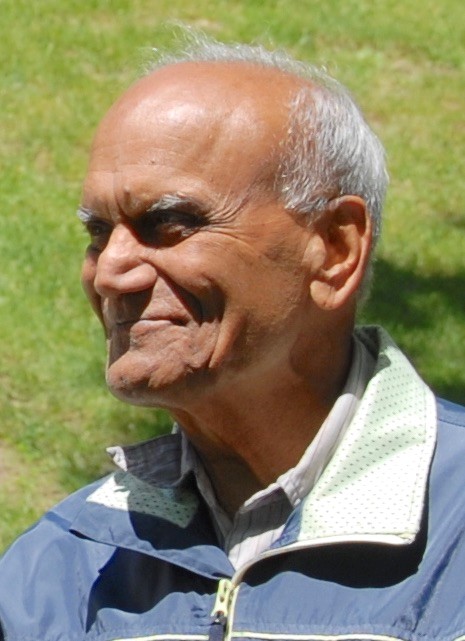
We are very sad to report the death of M.K. Sundaresan, Sundar to his many friends, in Phoenix, AZ on Jan 30 2017. Sundar was born in Chennai (Madras) India on Sept. 2, 1929. He started his career in theoretical physics as a Ph. D. student of Hans Bethe at Cornell. He returned to India but moved to Canada to work at the National Research Council (NRC) in Ottawa in 1957. He was appointed as an Assistant Professor at Carleton University in 1961. His subsequent career was intimately bound up with the Department of Physics. He rose rapidly through the ranks, becoming a Full Professor in 1965 and Chair of the department in 1978, in which position he served for a total of seven years. He also served on many university-level committees, including chairing the all-important Senate Budget Review Committee. On his retirement in 1994 he was appointed a Distinguished Research Professor, and remained active in research and teaching for many years.
He was largely responsible for the development of the Carleton Physics department as one of the foremost particle physics research groups in Canada. He was instrumental along with Ted Hincks in having the NRC high-energy physics group moved to the Carleton campus. When the NRC subsequently decided to phase out its high-energy physics activities, the group at Carleton was transformed into the Centre for Research in Particle Physics (CRPP) which played a major role in several important experiments, most notably the Sudbury Neutrino Observatory which was honored with the Nobel prize in 2015.
Sundar’s greatest strengths, reflected in his achievements, were the breadth of his knowledge and exemplary attention to detail. His work ranged over the whole gamut of theoretical physics. He made the first applications, to meson-nucleon scattering, of Tamm-Dancoff theory in 1954. His Ph. D. thesis was published in a lengthy paper co-authored with Freeman Dyson and Hans Bethe among others.
Sundar made the first use of a relativistic wave equation for quark models, resulting in the application of the Bethe-Saltpeter model to a wide variety of hadronic phenomena. Towards the end of his career he revisited the techniques of his Ph. D, using the Light Front Tamm-Dancoff formulation in Quantum Chromodynamics to deal with hadronic bound states.
The Carleton-NRC group, led by Ted Hincks and Cliff Hargrove, carried out a series of experiments on Muonic atoms: atoms in which an electron is replaced by a muon. The increasing sophistication of the experiments revealed a startling discrepancy with the existing theoretical predictions, which appeared to imply that QED was wrong. Sundar was responsible for finding the source of the discrepancy and bringing the results into agreement with theory.
The muonic atom work generated yet another innovative idea. Sundar and his colleagues made the first calculations on the phenomenology of the Higgs boson, most importantly calculating the decay rate into two photons. This particular mode was the one that led to its discovery at the LHC in 2012 and the subsequent Nobel prize for Higgs and Englert.
Sundar was always an enthusiastic student of physics, taking up and contributing to supersymmetry and superstring theories during exciting periods of their development. He also examined environmental effects on decay, finding corrections to tritium decay which produce distortions of the spectrum at low energies.
His impact was not simply on physics but also on many physicists. He was incredibly generous with his time, energy and knowledge to students and colleagues over the decades. This includes many stints of volunteer teaching and development work in his native India. Sundar was always receptive to new ideas, demonstrating excellent physical intuition in their evaluation, and was always encouraging.
He was a kind and caring man, of considerable personal modesty, and was devoted to his family. Carleton and the physics community are lessened by his death – he will be greatly missed.
Les Copley
Pat Kalyniak
Lazer Resnick
Peter Watson
Physics Dep't
Carleton University
Ottawa Ontario